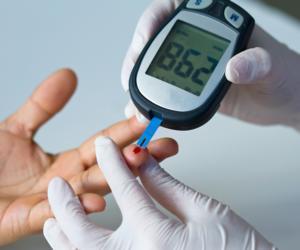“What tests diagnose diabetes?”
I am a 43-year-old female and I want to be tested for diabetes. What tests diagnose diabetes?
7 Answers
Endocrinology,DiabetesDiabetes
Sreedevi Reddy
Endocrinology, Diabetes
Diabetes can be diagnosed based on few criteria, and even if you’re positive for one of them, that is adequate. Fasting blood sugar or at or over 126 mg/dL or two hour glucose reading over 200 mg /dL after glucose tolerance test or Random blood glucose reading that are over 200 mg/dL or glycosylated hemoglobin, HBA1c which indicates three month average sugar at or over 6.5%. Simpler test would be a fasting blood sugar or HbA1c.
The diagnosis of diabetes mellitus is made by a blood (serum) glucose test. For non-pregnant adults a blood glucose level above 126 mg/dL before eating in the morning is considered diagnostic of diabetes mellitus. A blood glucose level over 200 mg/dL at any time will also make the diagnosis. Keep in mind that certain medications, stressful experiences such as acute
illness or surgery may elevate the blood glucose levels. Persons with diabetes will frequently be complaining of thirst causing them to drink plenty of fluids and to urinate frequently, even interrupting their sleep. The distinction between prediabetes and diabetes is best made when the person is afebrile, not menstruating, and preferably tested in the morning. A glucose challenge test using a sweet beverage with 75 g of glucose is sometimes ordered to confirm the diagnosis with blood drawn before the drink and 2 hrs after consuming it. Alternatively, some physicians rely on a hemoglobin A1c (HbA1c) test which reflects a blood glucose average of the previous 3 months. A result greater than 6.5 % is considered diagnostic for diabetes. I prefer to confirm HbA1c results with blood glucose testing, as described, since the diagnosis of diabetes mellitus has very serious implications for both the patient and their health record.
Nicholas H.E. Mezitis, MD, PhD
illness or surgery may elevate the blood glucose levels. Persons with diabetes will frequently be complaining of thirst causing them to drink plenty of fluids and to urinate frequently, even interrupting their sleep. The distinction between prediabetes and diabetes is best made when the person is afebrile, not menstruating, and preferably tested in the morning. A glucose challenge test using a sweet beverage with 75 g of glucose is sometimes ordered to confirm the diagnosis with blood drawn before the drink and 2 hrs after consuming it. Alternatively, some physicians rely on a hemoglobin A1c (HbA1c) test which reflects a blood glucose average of the previous 3 months. A result greater than 6.5 % is considered diagnostic for diabetes. I prefer to confirm HbA1c results with blood glucose testing, as described, since the diagnosis of diabetes mellitus has very serious implications for both the patient and their health record.
Nicholas H.E. Mezitis, MD, PhD
Dear patient,
It is most important to do a comprehensive medical history as well as a physical exam when diagnosing diabetes. The lab tests used are the Hemoglobin A1c which, when over 6.5, indicates diabetes. An A1c of 5.7 to 6.4 is prediabetes, below 5.7 is considered non diabetes. In some situations, the A1c is not specific and we use fasting plasma glucose or two hour post prandial plasma glucose. A fasting glucose below 100 is considered normal; 100 to 126 is prediabetes, and over 126 is diabetes; two hour sugars between 140 to 199 are considered prediabetes; over 200, diabetes.
Respectfully,
Marvin A. Leder, MD FACP FACE
It is most important to do a comprehensive medical history as well as a physical exam when diagnosing diabetes. The lab tests used are the Hemoglobin A1c which, when over 6.5, indicates diabetes. An A1c of 5.7 to 6.4 is prediabetes, below 5.7 is considered non diabetes. In some situations, the A1c is not specific and we use fasting plasma glucose or two hour post prandial plasma glucose. A fasting glucose below 100 is considered normal; 100 to 126 is prediabetes, and over 126 is diabetes; two hour sugars between 140 to 199 are considered prediabetes; over 200, diabetes.
Respectfully,
Marvin A. Leder, MD FACP FACE
There are several ways diabetes can be diagnosed. 1) a Fasting Blood Glucose test. This may require a blood draw or a finger stick. a value of 126 or greater is diabetes. Below this is either Pre-diabetes or normal depending on the level. 3) a Hemoglobin A1c test (HbA1c). This can be done on a single blood draw or in some offices on a finger stick. A value less than 5.8% is normal, 5.8-6.5% is prediabetes, & >6.5% is diabetes. 3) an oral glucose tolerance test. This requires to drink an overly sweet drink, then do several blood draws over a 3 hour period. A 2 hour value of blood glucose >200 is diabetes, <200 but >140 is prediabetes and < 140 is normal. 4) A FBS > 200 at any time if you have any symptoms of diabetes such a excess thirst & urination, severe Weight loss, etc. A complete list of symptoms can be obtained from the American Diabetes Association of your town or if none from them on the internet.






